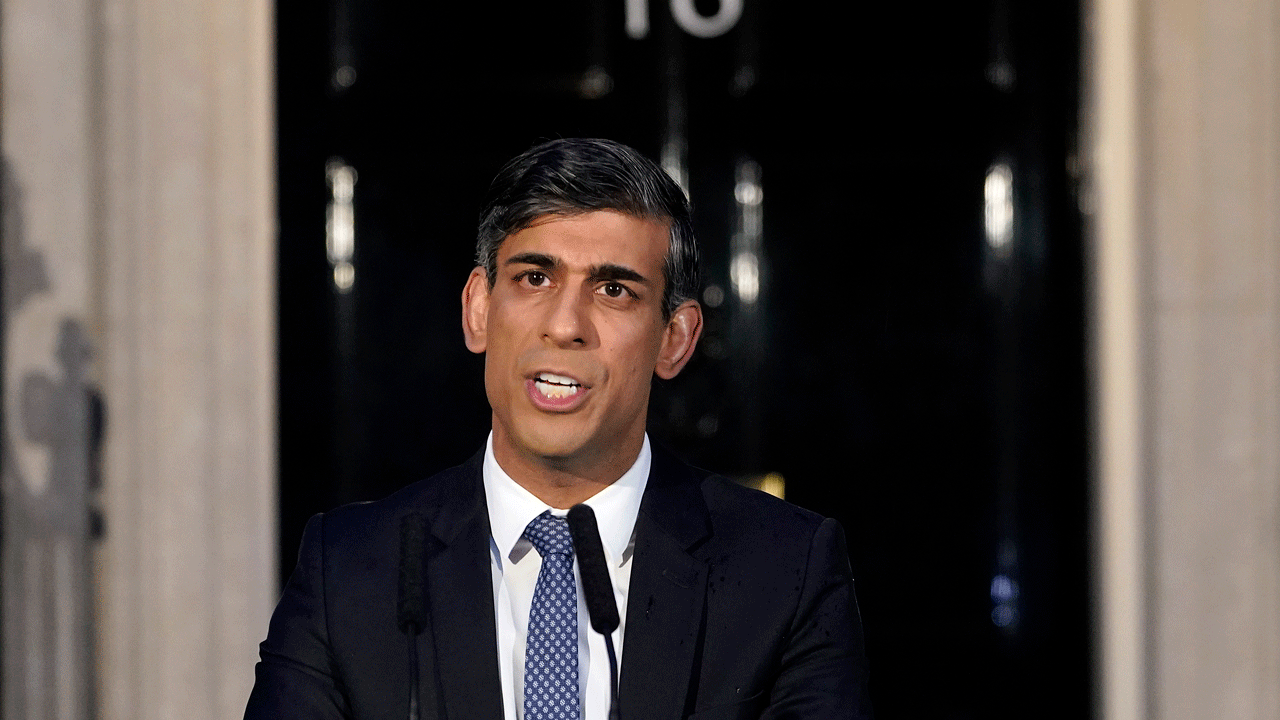More than 60,000 Israelis who live far from Gaza but close to the front line of another spiraling conflict have in recent months been ordered from their homes along Israel’s northern border with Lebanon — the first mass evacuation of the area in Israeli history.
In one Israeli border town, antitank missiles fired from Lebanon have damaged scores of homes. In another village, holdouts who refuse to evacuate said they avoided turning lights on at night to keep from becoming visible targets. And in a sign of the proximity of the fighters across the border and how personal the simmering hostilities have become, a farmer said he had received a text message claiming to be from Hezbollah and threatening him with death.
The evacuations and an effort in Lebanon to move thousands of civilians away from the border are the result of an intensifying conflict between Israel and Hezbollah, the Lebanese militia and political organization.
The skirmish along Israel’s northern border is being fought in parallel with the more intense war in Gaza, which Israel launched after Hamas’s Oct. 7 attack. Now also in its sixth month, the battle with Hezbollah has implications both for the prospects of a wider regional conflict and for the thousands of civilians who live along the frontier.
Israel has responded forcefully to Hezbollah’s attacks: Above the hills and valleys of Israel’s border with Lebanon, Israeli warplanes rumble overhead. In the recent fighting, at least eight civilians in Israel and 51 in Lebanon have been killed, according to the Israeli and Lebanese authorities, as have combatants on both sides.
A recent two-day trip through the Galilee Panhandle — a finger of Israeli territory that juts into Lebanon — and west toward the Mediterranean coast revealed a mostly abandoned landscape stalked by fear and overtaken by nature. This stretch of Israel has become a virtual no-go zone, even to families who have lived in the area for generations. Military checkpoints block access to communities within a mile or so of the frontier, and daily life is frozen in a state of anxious suspension.
Residents of the region are split over whether the government was right to order an evacuation. Some say it showed weakness and effectively handed Hezbollah a victory. Others say it has saved countless lives.
Chaim Amedi, 82, a resident of Kfar Yuval, a now mostly deserted village barely a mile from Lebanon, has refused to abandon the town his parents founded in the 1950s and evacuate to a hotel. “You don’t leave a home,” he said, adding that “hotels are for vacations.”
Hezbollah, the Iran-backed Shiite group that is better armed and organized than its Hamas allies in Gaza, began firing across the border after Oct. 7. The attacks have been big enough to demonstrate the group’s solidarity with Hamas, but measured enough so far to prevent provoking an all-out conflict with Israel.
Some days, Hezbollah has fired up to 100 short-range rockets. Israel, in turn, has struck targets up to 60 miles inside Lebanon.
In Kiryat Shmona, normally an Israeli city of about 24,000, about 1,500 inhabitants remain. Many residents, now scattered among 220 hotels across Israel, did not even wait for the government’s order on Oct. 20 to evacuate.
The town’s banks and malls are closed. The start-up companies at the city’s burgeoning food-technology hub have left. Only one eatery is open — a modest shawarma and falafel joint catering mainly to soldiers.
Toby Abutbul, 22, the son of the owner, showed reporters video footage of what he said were two anti-tank missiles landing in front of him in February as he drove along on the city’s main road. An air-raid siren sounded only after the missiles struck. A nearby woman and her teenage son were severely wounded, according to the local authorities.
Israel’s Iron Dome system can intercept many types of rockets, which fly in high arcs and are difficult to aim, but nowadays, Hezbollah also fires rocket-propelled grenades and anti-tank missiles. Israel has no immediate answer for such weapons, which allow for more precise line-of-sight targeting, fly low to the ground and hit targets in seconds and without warning.
Hezbollah’s use of those weapons means there is no time to run to a shelter. If anything happens, the instructions are to hit the ground wherever you are.
Itay and Niv Tamir, a couple in their 30s, returned home in late January with their sons, ages 1 and 4, to the border community of Kibbutz HaGoshrim.
They risked returning, they said, in part because their house is not in the direct line of sight from Lebanon. Nevertheless, the boys sleep in a bombproof safe room.
“We try not to let the fear control us,” Ms. Tamir said. But, she added, the family rarely ventures far outdoors given that much of the kibbutz is within view of villages in Lebanon.
An anti-tank missile in December crashed through an auditorium in Kibbutz Sasa, according to the military and local officials. Hezbollah has also employed exploding drones, with which they have struck an army base, according to the group and the military.
Israeli government and military officials say they are considering military action to push Hezbollah back from the border unless a diplomatic effort can achieve the same result first. In the meantime, the death toll on both sides is rising.
This month, the Israeli military said that its air and ground forces had struck more than 4,500 Hezbollah targets in both Lebanon and neighboring Syria since Oct. 7, and that they had killed more than 300 Hezbollah operatives. Hezbollah’s official website and spokesman said that “more than 200” of its fighters had been killed to date.
Fourteen Israeli soldiers have been killed in the north so far, according to the Israeli authorities.
For decades, Israel’s northern towns and villages were targets for militants based in Lebanon. Armed Palestinian groups infiltrated the border in the 1970s and 1980s, entering homes, hijacking buses and taking schoolchildren hostage. The city of Kiryat Shmona, in the Galilee Panhandle, was plagued by Katyusha rocket fire and was long a symbol of Israeli resilience.
Israel invaded Lebanon in 1982 and left in 2000. During Israel’s long occupation, Lebanese villagers crossed the border daily to work on Israeli farms and in the towns of the Galilee.
Even during the worst battles of the past, including a devastating, monthlong war with Hezbollah in 2006, Israel never formally evacuated the border towns.
Since that war ended, residents say they have seen fighters who appear to be from Hezbollah’s elite Radwan forces monitoring them through the border fence, violating a U.N.-backed cease-fire that ended the war and was meant to establish a demilitarized zone.
“They studied each community, studied us personally, our routines, our places of employment, waiting for an opportunity,” said Eitan Davidi, 53, a farmer from Margaliot, a small village abutting the border. “They know when I come, when I go. They know my kids.”
In January, Rear Adm. Daniel Hagari, the Israeli military’s spokesman, said at a news conference that Radwan fighters were operating along the border.
Mr. Davidi, who produces chicken eggs and owns fruit orchards, said the war became particularly personal after he gave interviews to the Israeli news media in which he said Lebanese border villages harboring Hezbollah fighters should be razed — “Not on their heads,” he said, clarifying that he was referring only to the buildings.
First, he said, he received a threatening WhatsApp message reminding him in Hebrew that his chicken coops had already been hit twice. “We won’t miss the target a third time,” the message read. It was signed Hezbollah. The New York Times, which viewed the message, could not independently confirm its origin.
Next came a social media post from a correspondent for Al Manar, Hezbollah’s television channel, calling Mr. Davidi the “mule” of Margaliot. The post included images of gunmen on the Lebanese side of the border with Mr. Davidi’s village, his chicken coops and home visible in the background.
Missiles and rockets have since incinerated most of his coops. One exploded in his backyard. An anti-tank missile fired into Margaliot on March 4 killed a farm laborer from India and injured seven more foreign workers, according to the Israeli military.
Hezbollah and Lebanese officials have also blamed Israel for targeting civilians across the border. Last month, after a family was killed in an Israeli strike, Najib Mikati, Lebanon’s caretaker prime minister, accused Israel of “killing and targeting of innocent children, women, and older adults.” After the same attack, Hassan Nasrallah, the Hezbollah leader, vowed Israel would “pay the price of spilling their blood.”
A sixth-generation farmer from Metula, Tal Levit, 45, who now serves in the military reserves as a member of the town’s emergency response team, said his home had also been struck by Hezbollah.
Speaking at a rest stop south of Metula, he said he had seen people on the Lebanese side of the fence monitoring the town. “Some were half in uniform, or were dressed as shepherds,” he said. “They were photographing, preparing.”
In the summer months, he said, the leaves of a pecan tree obscure his house from prying eyes, but the winter left it exposed. Generally, Mr. Levit has been careful not to go home wearing his military uniform. But one day last month, he entered his house to do laundry and have a cup of coffee. An hour after he left, a missile penetrated the roof and exploded inside, he said.
On the approach to Kfar Yuval, a faded road sign reads, “Border Ahead.” A mother and her son, who was a member of the village’s armed response team, were killed in January when an anti-tank rocket struck their home on the edge of the village, according to the Israeli military.
Along the village pathways, orange trees are heavy with unpicked fruit. The top half of a children’s plastic slide emerges from the green sea of an overgrown lawn. Most of the houses are shuttered.
The silence one recent afternoon was broken by a long series of booms.
It was hard to tell who was firing on whom.






